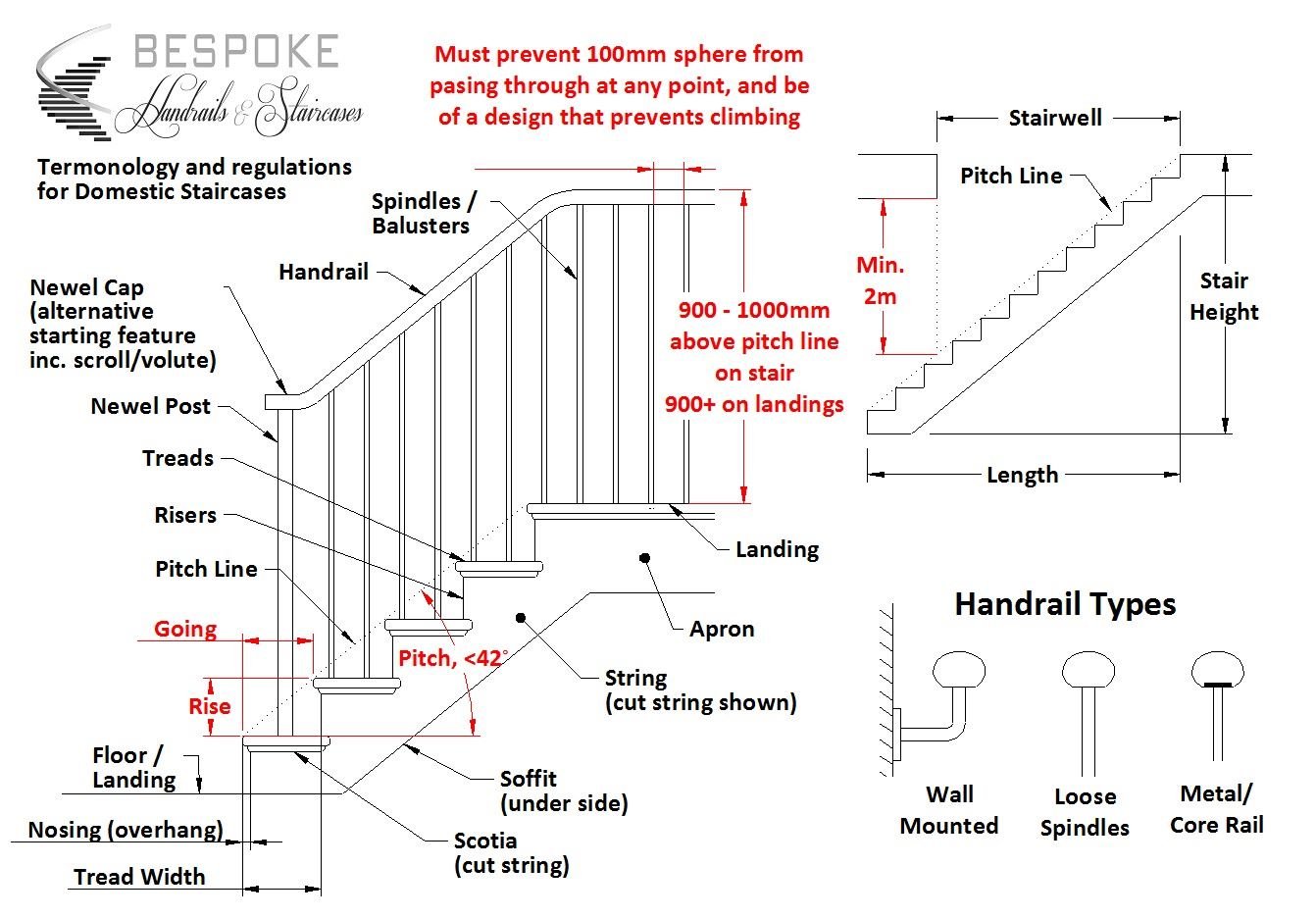Regulations
Simplified Stair Rules for Dwellings
This is a simplified set of guidelines describing the most common aspects in a stair design for dwellings. Formal and complete guidance is provided within The Building Regulations Annex K – Protection from falling, collision and impact for certified guidelines and anything other than dwellings.
 Rise & Going: Stair must meet the following rise and going limitations
Rise & Going: Stair must meet the following rise and going limitations
| Type | Rise (mm) | Going (mm) | Stair Rule * |
| Private | 150-220 ** | 220-300 | 550-700 |
| Utility | 150-190 | 250-400 | |
| General Access | 150-170 | 250-400 |
- * Stair Rule – 2 x Rise + Going
- ** 170-200 is generally preferred
- Min going on smallest part of winders = 50mm
- For stairs < 1m wide, going is measured in the middle,
- For stairs >1m wide, going measured at 270mm from each side
Headroom:
- Must be >2m all locations on flights and landing, (note more headroom provides feeling of space)
- For Loft conversions permissible >1.9m middle of stair, >1.8 at lowest point.
Landings
- Mid-flight landing steps should be at least as wide and long as the smallest stair width
- Must be clear of permanent obstructions
- Cupboard doors may open over landings, but minimum unobstructed free space of 400mm.
- Top/bottom landings should be level, but can be up to 1:60 slope if paved or appropriately firm
- Door may swing across landing (bottom only) providing unobstructed free space of 400mm from 1st tread.
Alternative tread stairs: allowable for loft conversions only if insufficient space to satisfy other requirements
Open Risers: permissible in dwellings provided there is a minimum gap of 100mm and treads overlap >16mm
Handrails
- Top of handrail between 900mm and 1000mm from pitch/nosing line or floor
- Handrail is required on one side of stair, and on both sides if the stair width is >1000mm
Balustrade / Guarding:
- Unless exemption from children <5, Must prevent 100mm sphere passing through & be resistant to children climbing
- Required on flight and landings >600mm high
- Be of sufficient strength and level of safety (e.g. glass breaking), see building regulations for details
